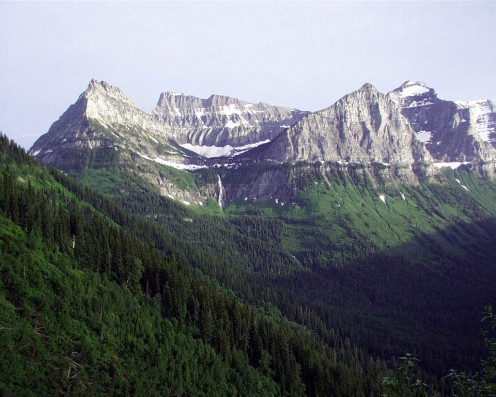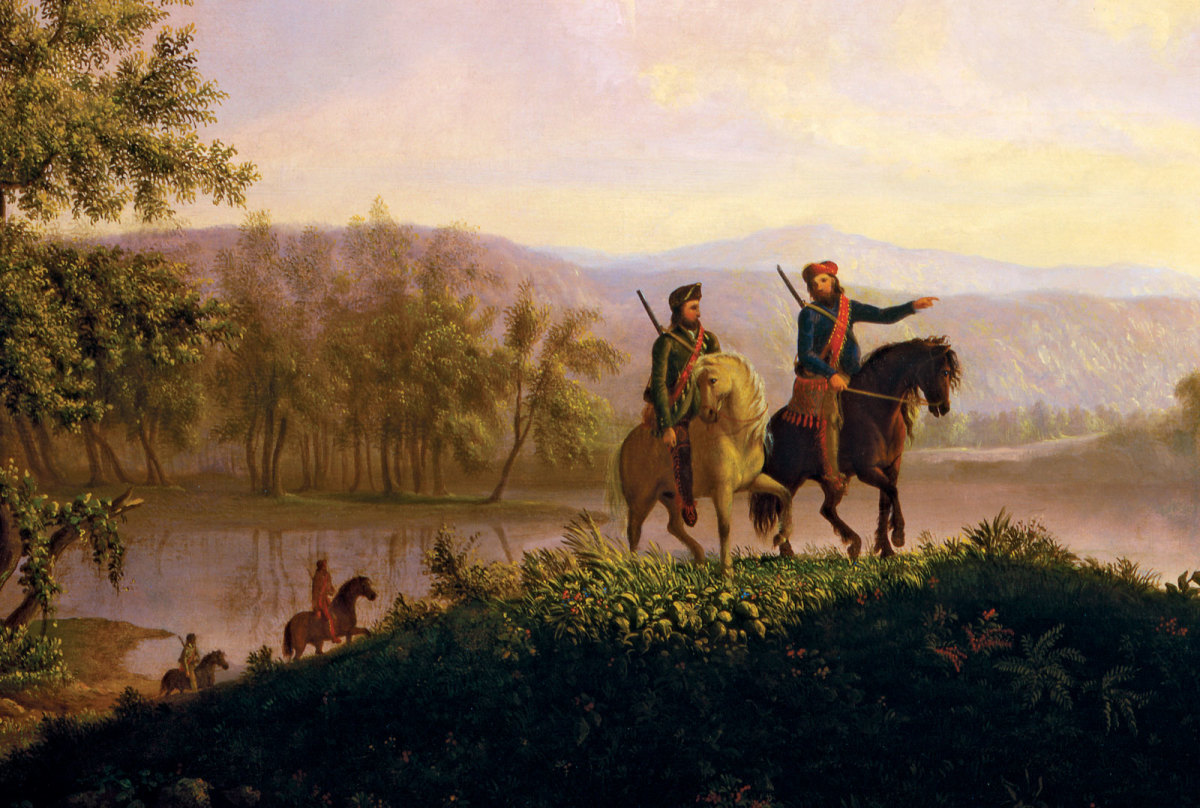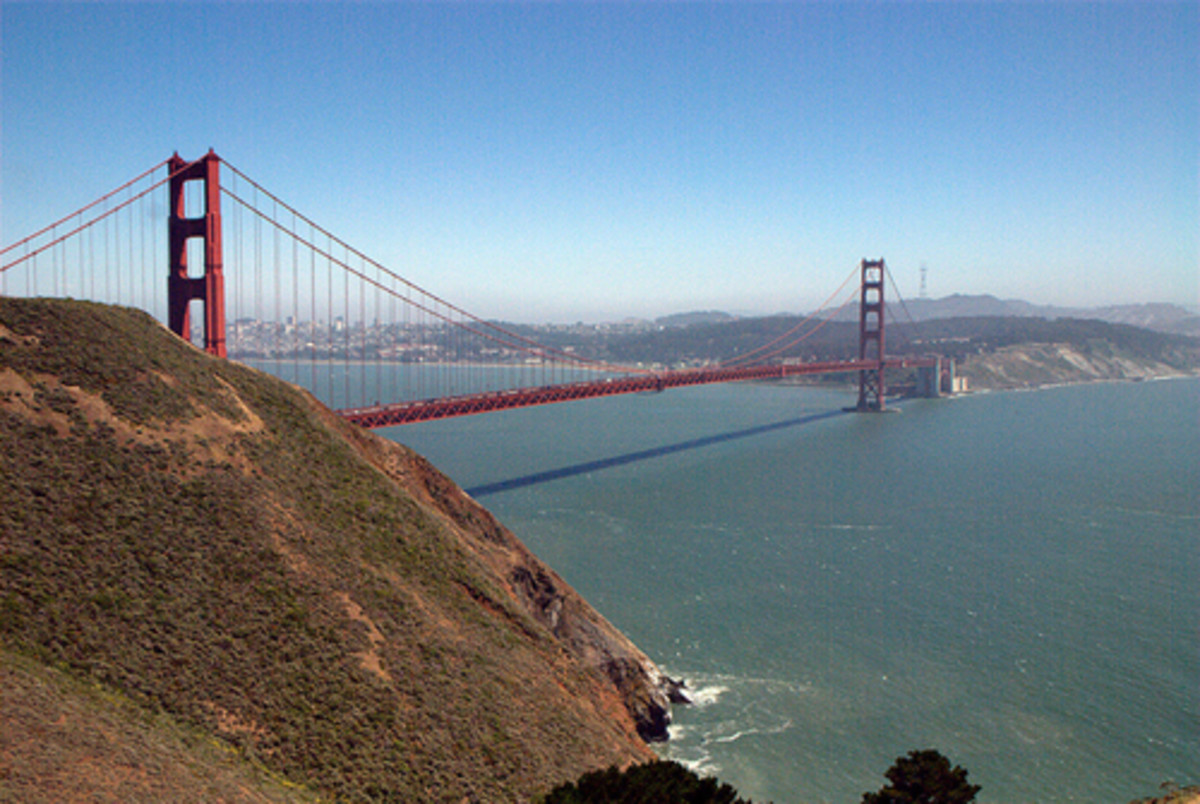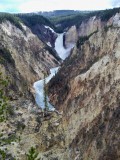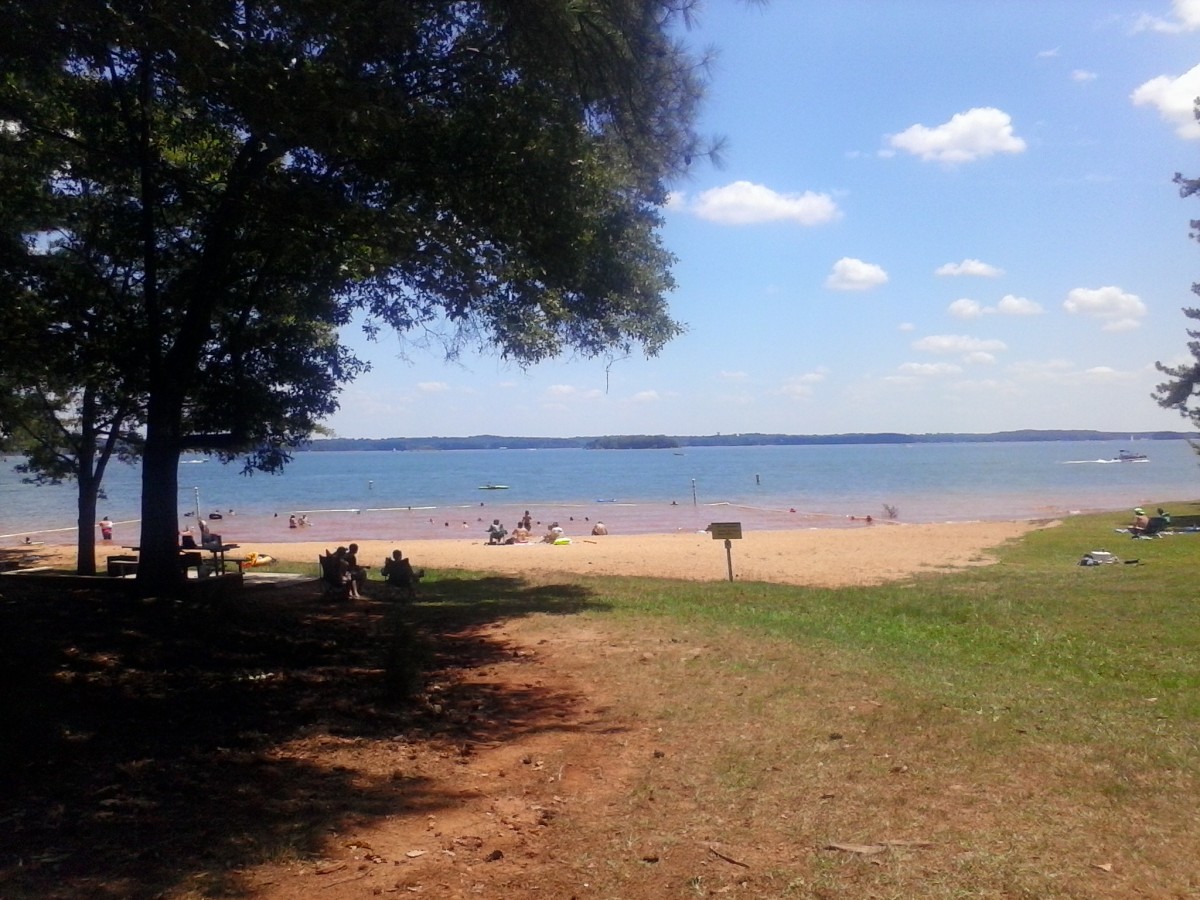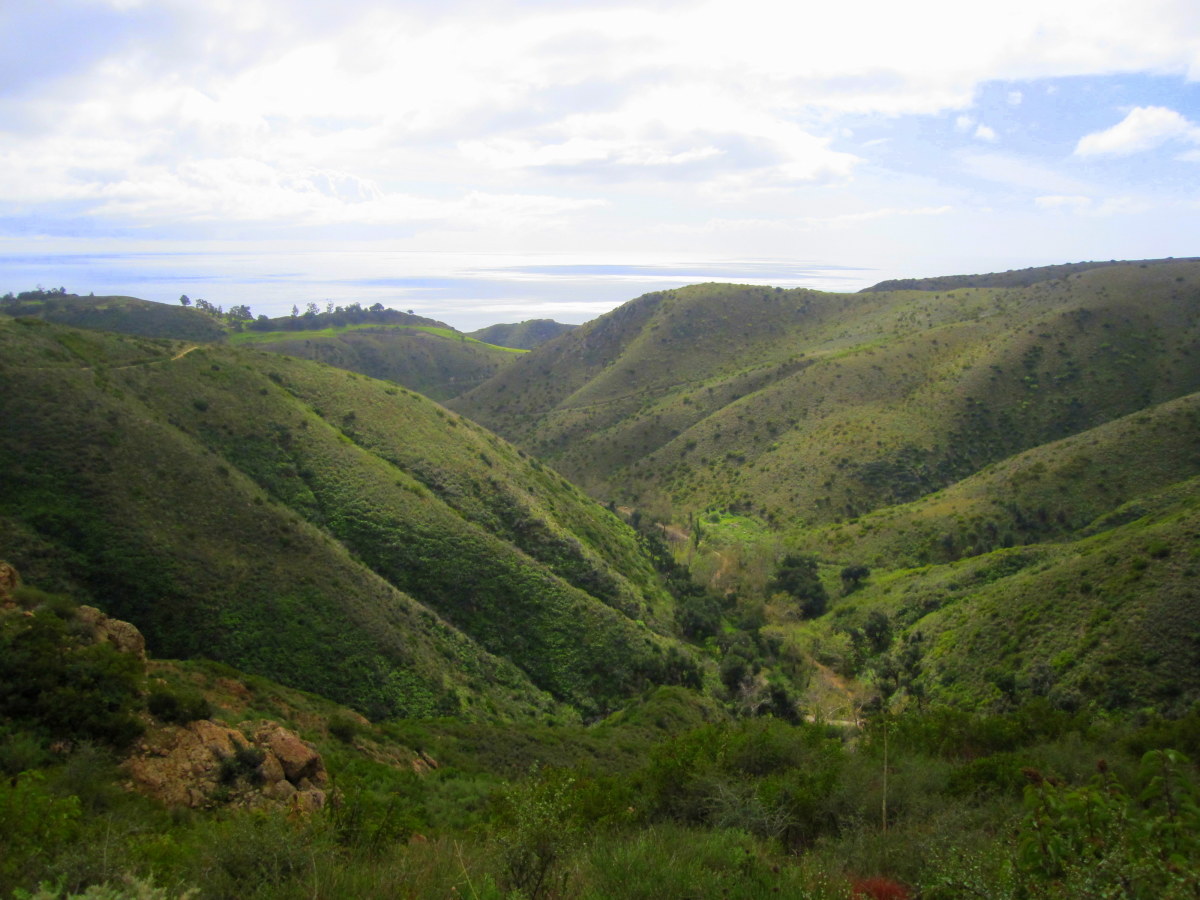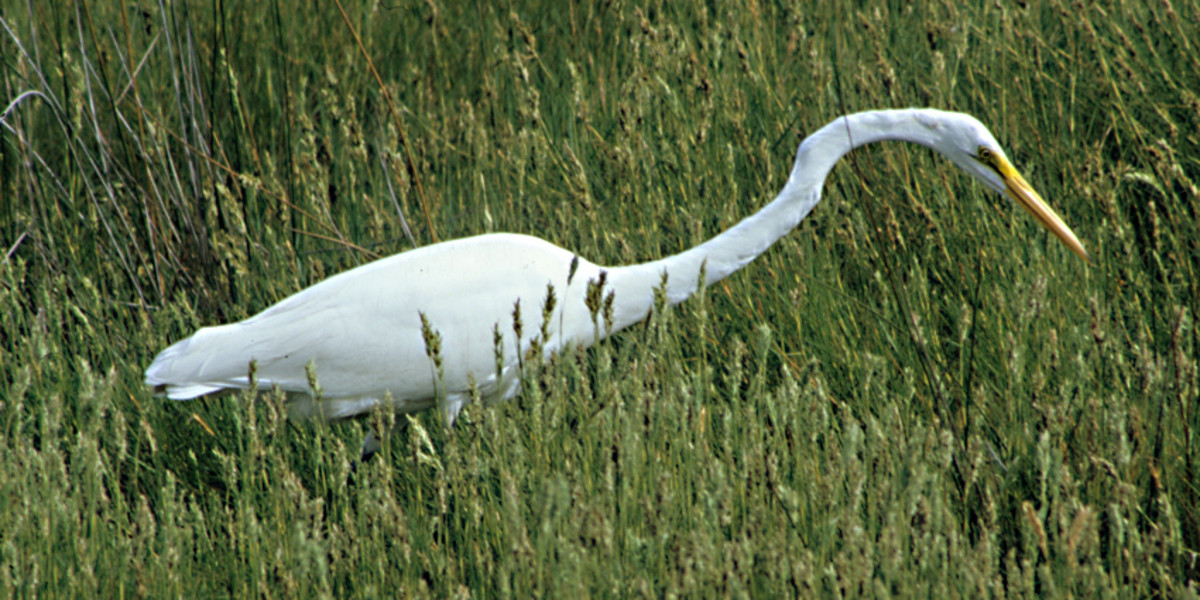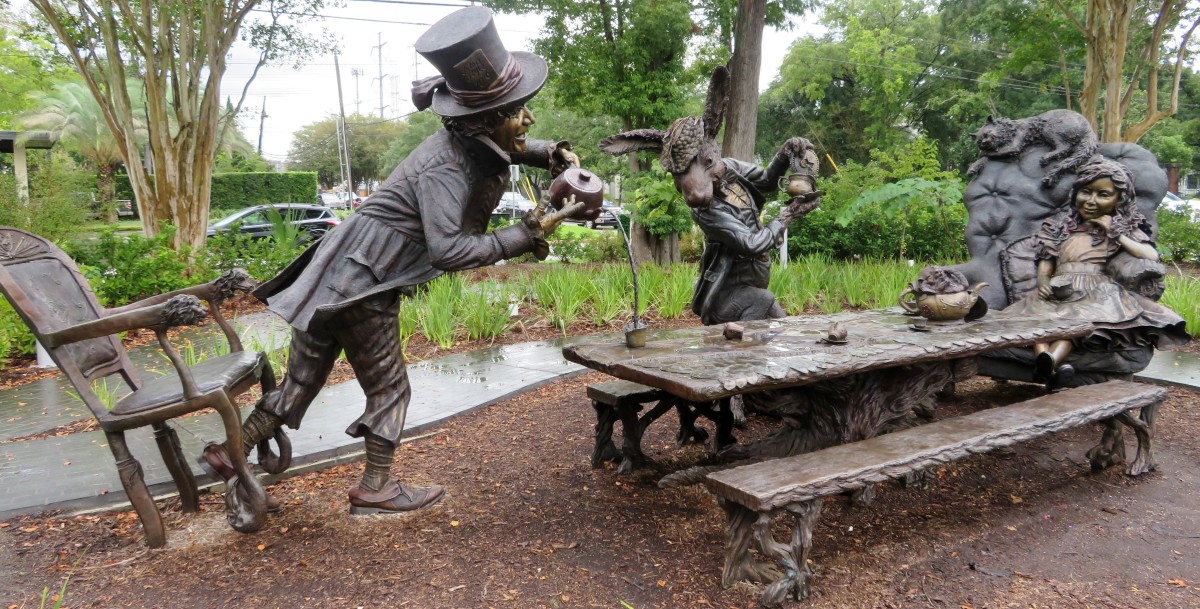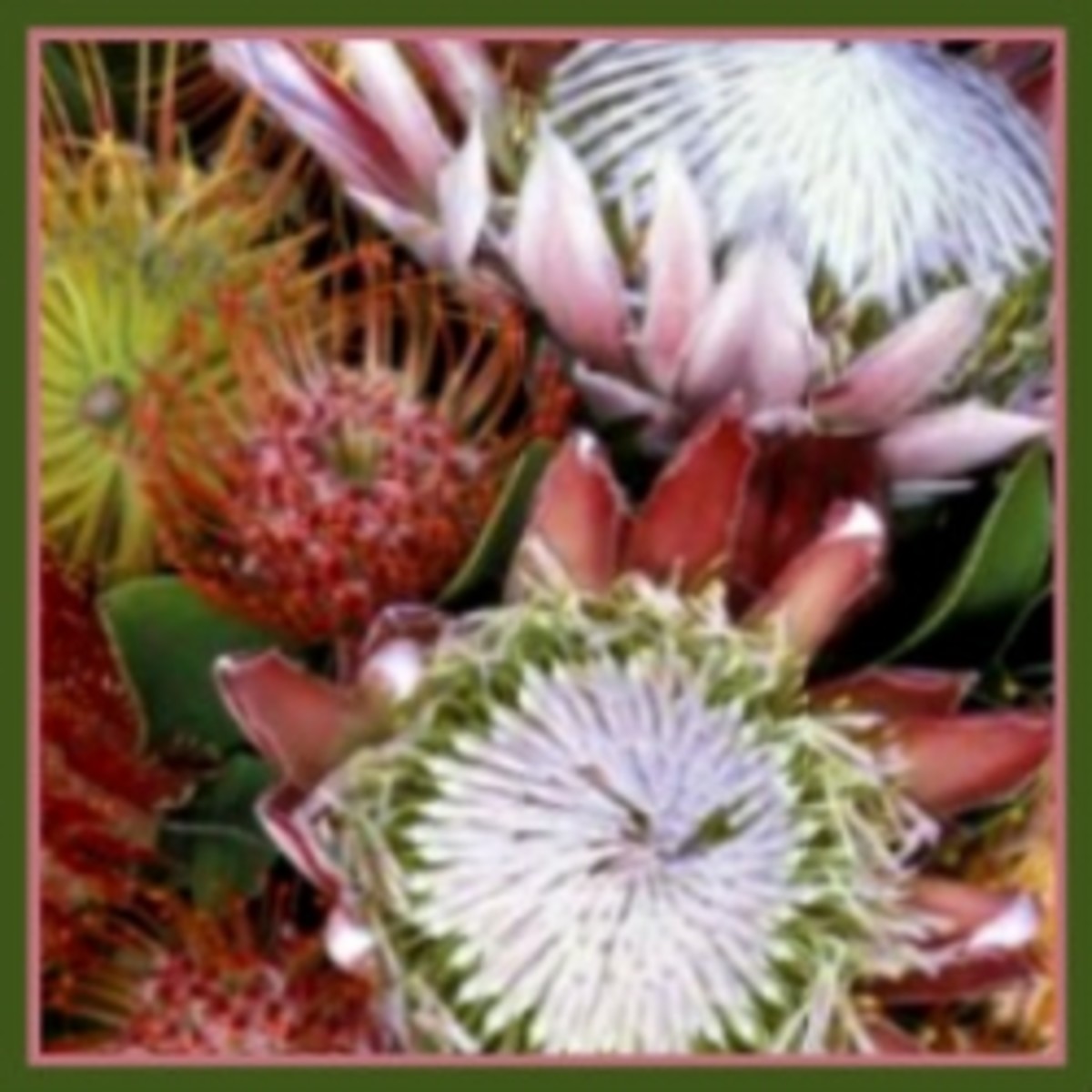- HubPages»
- Travel and Places»
- Visiting North America»
- United States
Top Ten Destination Spots in Montana
10. The Marcus Daly Mansion
Purchased in 1886 and located in Hamilton Montana, The Marcus Daly Mansion is a three story building with more than fifty rooms. There are seven fireplaces in this gorgeous mansion with five of them made of marble.
Marcus Daly was recognized for being involved in silver mining in nearby town, Anaconda and was also known as a copper king.
After Marcus Daly died in 1900, his wife, Margaret restored and redesigned the house. Today it is used as a museum and is open to the public.Guided and self-guided tours are available while visiting this historical mansion.
Original furniture as well as other décor throughout the house is still there.
Outside you will have the opportunity to explore the garden or have a bite to eat at the picnic tables. There is also a gift shop with merchandise available for sale.
This National Historic Site is a popular attraction for weddings, parties and meetings.
The Marcus Daly Mansion
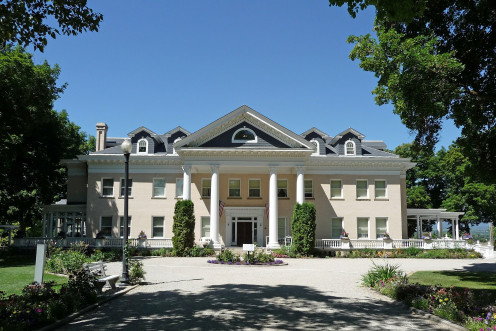
The Copper Kings
9. Pompey’s Pillar
Pompey’s Pillar is a large rock formation where Lewis & Clark traveled through and where Clark carved his name.
The carving of Clark’s named was discovered in 1863 and the name was carved on July 26, 1806.
Pompey’s Pillar is a Natural Historic Landmark.
A concrete boardwalk leads to the pillar where it was signed. At Top Pass you will find a replica of a canoe and the Yellowstone River.
Clark Days are hosted at this location and is held on the last Saturday and Sunday of July. During this event you will see reenactments of the canoe voyage, partake in a buffalo barbecue and there is even entertainment!
Pompey’s Pillar is located 25 miles east of Billings, Montana and is the only physical evidence remaining of The Lewis and Clark Expedition.
This spot is also said to have been visited by Custer and his men who stopped to bath and were fired upon by the indigenous Indians from the area.
Pompey's PIllar
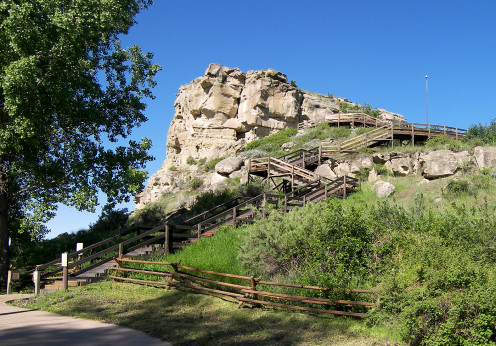
Signature of William Clark
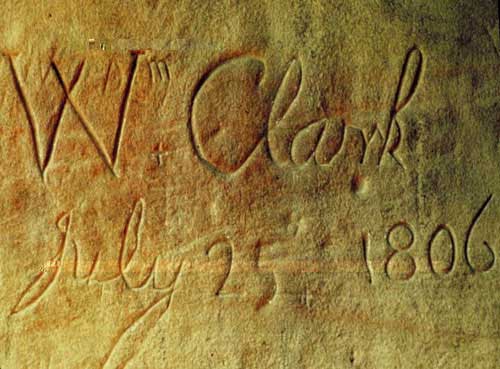
8. Lewis & Clark Trail
Montana is the most documented state by Lewis and Clark. On this trail you will find many points of interest.
On April 25, 1805 Lewis and Clark camped at the future site of Fort Union. An important place for fur trappers in the 1850’s was Glasgow and the Milk River. Lewis and Clark visited The Milk River on May 8, 1805 and gave the river its name due to its color.
Another future site that was explored was Fort Peck which was constructed in 1867. This is wear Lewis and Clark ran across grizzly bear, deer and Buffalo. At the time of the visit, Fort Peck was used as a trading post.
The Lewis and Clark Trail passes through White Bear Island and Great Falls and continues on to The Great Falls of the Missouri. It is documented that Clark was attacked by a grizzly bear and a big cat at the Great Falls of the Missouri.
Another future fort that is part of the trail is Fort Benton which was eventually built in 1846. This location was another place where Lewis and Clark camped when they came across the area on July 4th 1805.
Down the trail you will find Lolo where Lewis and Clark passed the Bitterroot River and camped at Lolo Creek. This trail then crosses over Gates of the Mountains, which was named by Lewis and Clark..
Next on the trail is Three Forks which was where Sacajawea was kidnapped as a child.
On August 8, 1805 The Lewis and Clark Expedition landed at Beaverhead Rock and on to Beaverhead Valley which today is, Dillon, Montana.
Clark’s Lookout State Park is also on the trail and was documented for its extreme beauty.
There are many other stops along the trail to the Pacific such as Lolo Hot Springs and as we know, Pompey’s Pillar.
The last stop in Montana is at Heritage State Park where the expedition arrived on 7/8/1805.
Three Forks
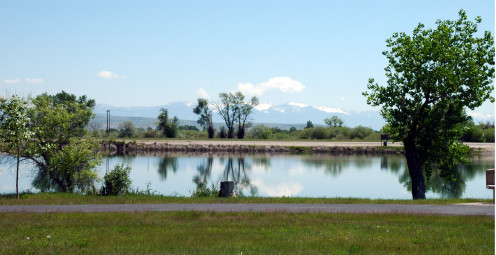
Great Falls of the Missouri
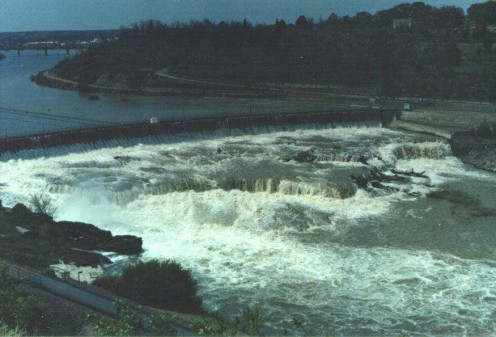
Old Fort Peck Agency
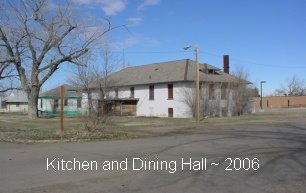
Lewis and Clark State Memorial, Fort Benton
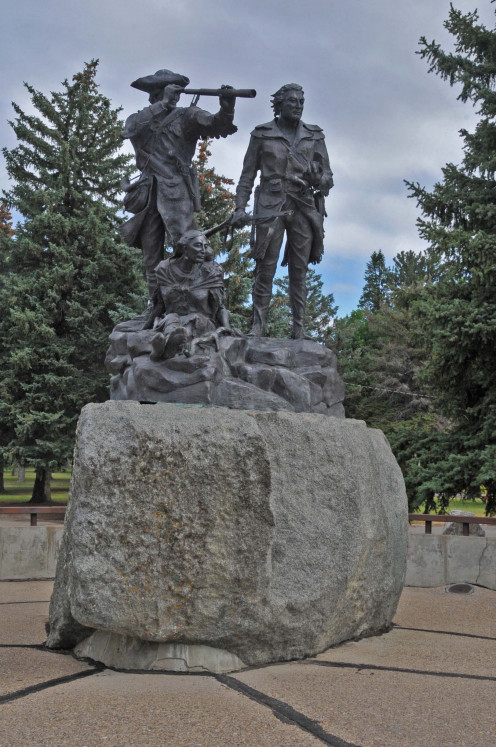
7. Bighorn National Recreation Area
Established in 1966, The Bighorn National Recreation Area is contributed to by the Yellowtail Dam which holds the Bighorn River which gives us Bighorn Lake. This lake is a popular fishing attraction with the fish of choice being trout.
The Bighorn National Recreation Center is located on the border of Montana and Wyoming and is also home to the Fort Smith Visitor Center.
Another Lake located in this recreation area is Afterbay Lake which is another popular fishing spot for trout.The wildlife in this area is abundant and include many kinds of bird such as; ducks, geese, eagles and other species of bird.
While visiting the Bighorn National recreation Area you will have the opportunity to visit the Devils Canyon Overlook. This is where Bighorn Canyon and Devil Canyon meet.
While driving on this winding canyon you will see wild horses and bighorn sheep. The road is paved and the overlook offers spectacular views of the wild life and terrain indigenous to Montana.
There are places to camp while visiting the Bighorn National Recreation Area and two of them are; Horseshoe Bend and Barry’s Landing. Horseshoe Bend is on the Bighorn River and offers 48 campgrounds, boating and fishing. Barry’s Landing is another campground spot which offers fishing and swimming.
There are also trails and a boat launch. The campgrounds are more primitive style camping with few facilities and what a better way to take in the full experience.
The Yellowtail Dam
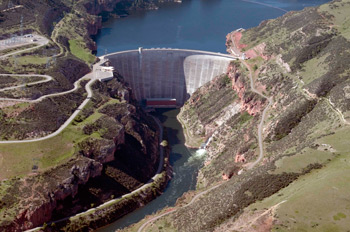
Bighorn Lake
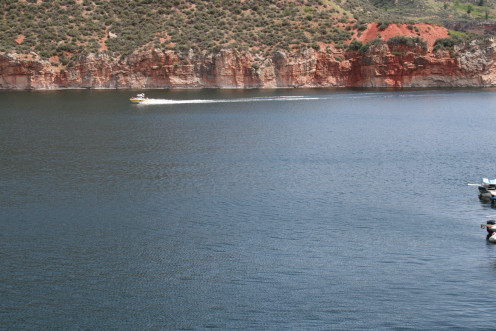
Bighorn Canyon
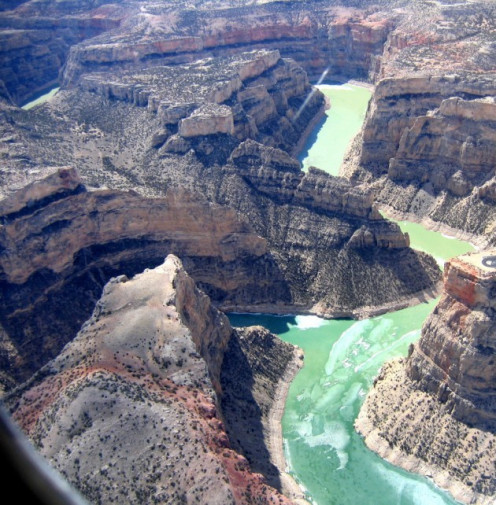
6. Flathead Valley
Known as the gateway to Glacier National Park, Flathead Valley is full of beauty, recreational opportunities as well as entertainment. Boating, swimming, fishing and camping are all popular activities in the area. Flathead Lake is 28 miles long and up to 15 miles wide.
While visiting Flathead Lake you will see spectacular views of the Mission and Swan Mountains. Cruises are available which offer anything from live music to bingo!
A great attraction located here is Wild Horse Island which is a wild life refuge. This is home to bear, coyote, bighorn sheep, deer and more. There are also 75 different species of bird and trails around the island for you to explore.
Established in 1908, The National Bison Range is another place to see. There are 350-500 bison roaming the land and is also home to deer, birds, bighorn sheep and even black bear. There is a visitor center in Moiese, Montana.
A spiritual site in Flathead Valley is the Garden of 1000 Buddha’s which is also known as an international peace center. North of Arlee Montana and part of the Flathead Indian Reservation, the Garden of 1000 Buddha’s was founded by Gochen Tulku Sang-Ngag. This spot is lined with Tibetan statues of different kinds, along with 1000 trees, prayer wheels and a pond. There are many flowers as well, most of them being lavender.
The focus of this garden is to preserve Tibetan culture. This site is open to everyone regardless of nationality and religion.
Located in Arlee, Montana, the Arlee Powwow is a popular yearly event which attracts about 100,000 people ever year. Always around the 4th of July, the Arlee Powwow offers many different activities which include competitions, singing and dancing, war dancing being one of them. There is also food. Don’t forget to participate in the trail walk to get the full experience.
Ninepipe Bird Refuge is another great place to stop by while visiting Flathead Valley. You will see many species of bird which include; heron, geese and ducks.
Flathead Valley is also where you will find music festivals all year long with the Flathead Lake Blues Festival being of of them. This event is held every August.
East of Flathead Lake, outside of Flathead Valley you will find the Mission Mountains where you will see Mission falls, which is one of 120 falls in Montana, along with other falls around the area. The highest point here is McDonald Peak which reaches 9,820 feet tall and part of the Flathead National Forest.
Flathead Lake
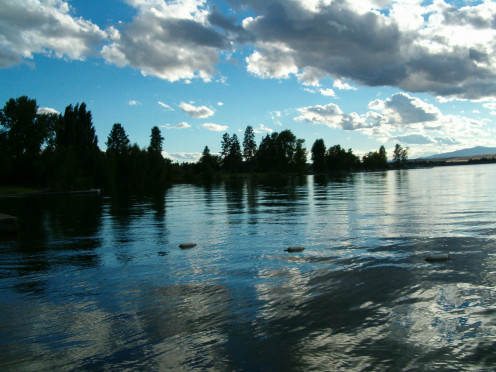
The National Bison Range
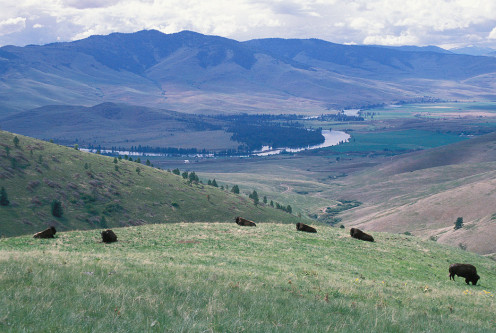
The Garden of 1000 Buddha's
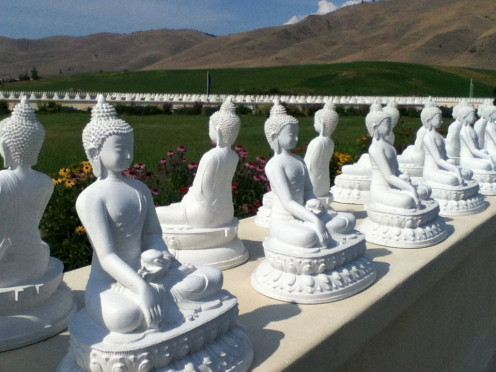
The Arlee Powwow
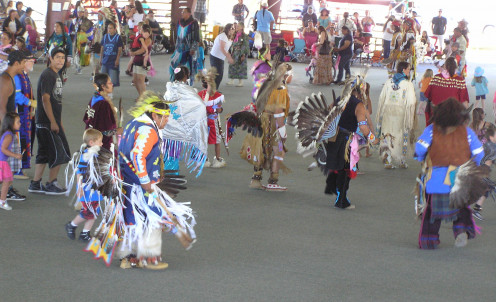
Mission Mountains
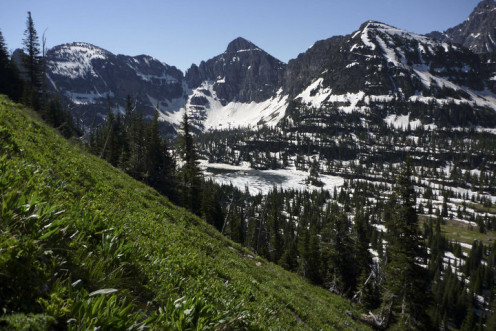
5. Little Bighorn National Battlefield Monument
Established in 1940, The Little Bighorn National Battlefield Monument is located on the Crow Indian reservation and is the site of the Battle of Little Bighorn. This is where Custer and his 262 men in the 7th Calvary were outnumbered by the Sioux, Cheyenne and Arapaho tribes when they lost their lives in 1876.
This is where you will find battlefield graves and memorials marking Custer’s Last Stand.
While visiting the Little Bighorn National Battlefield Monument you will see scattered graves of soldiers who were buried where they fell. There are several other memorials at this site dedicated to those lost in the Battle of Little Bighorn.
Erected in 1881, The Army Memorial, made of granite, is located on Last Stand Hill where many of the soldier’s remains were moved to. The scattered graves are marked in white marble for Custer and his men and red granite for the Indian warriors.
West of Last Stand Hill is Indian Memorial which honors Indians who fought. Some of the men honored are Crazy Horse and Sitting Bull.
Certain times of the year there are reenactments by the Little Bighorn River. There is also the Little Bighorn Visitor Center to visit which holds artifacts, documents, photographs and more! There are over 7,000 items and 450,000 documents and photos.
Indian Monument
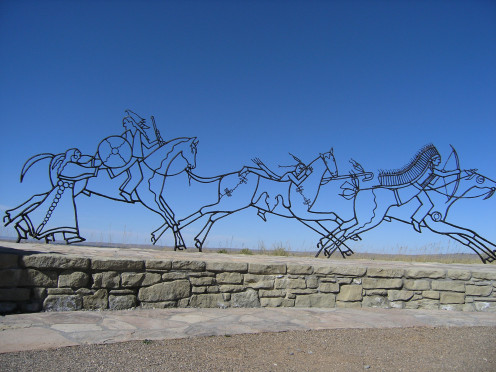
4. Beartooth Corridor
Located in South West Montana and North West Wyoming, The Beartooth Corridor is a 68 mile byway that leads to Yellowstone.
While traveling on the Beartooth Corridor you will get great views of the Beartooth Mountains.
There are also many opportunities to see wildlife such as moose, mountain goats, black and grizzly bear, wolf, elk and deer. There are also lakes, waterfalls, streams, rivers, forests and valleys.
There are plenty of places to camp and horseback guided tours are even available.During wintertime this is a snowmobiler’s paradise while the highway is closed to traffic.
Located in Columbus Montana, The Museum of the Beartooth Mountains holds many local artifacts along with exhibits which change frequently.
You will pass by Absarokee and head to Red Lodge Mountain, home to Red Lodge which was established in 1884.
Another place you will have to opportunity to visit is the Yellowstone Wildlife Refuge which houses animals such as; bear, cougar, elk, bison, wolves and lynx.
The last stop is at Cooney State Park which is home to a reservoir available for boating, fishing, camping, and swimming and there are even campgrounds!
Custer's Grave with other Scattered Graves
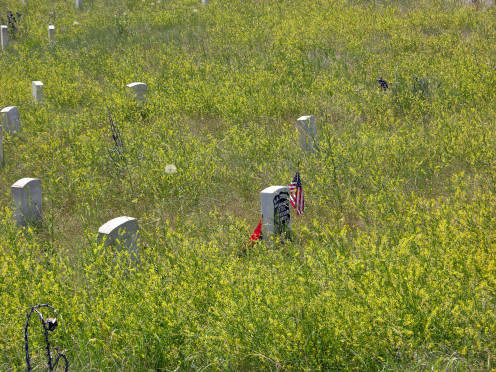
Granite Monument near Last Stand Hill
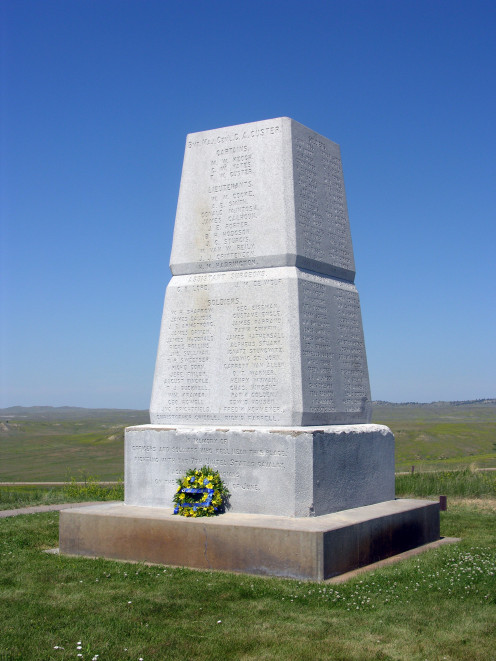
Beartooth Corridor
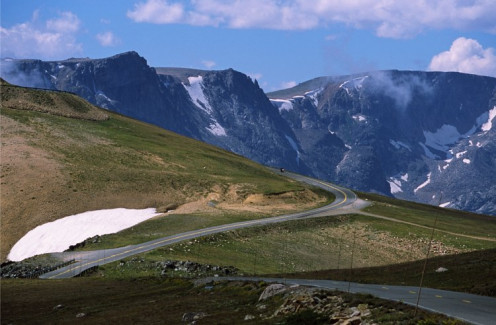
Beartooth Byway
3. Ten Lakes Basin
Located near Eureka in the Kootenai National Forest, Ten Lakes Basin offers a variety of remote hiking trails for those who want to explore the area. The gorgeous terrain and rugged mountains draw back packers from all over to Ten Lakes Basin.
Another one of the great backpacking attractions are the Whitefish Mountains. The mountains in Ten Lakes Basin reach up to 7,800 feet high. Located in north east Montana on the Canadian border, Ten Lakes Basin offers many fishing areas.
Some areas throughout Ten Lakes Basin are designated for wilderness research. These areas are virtually untouched and due to this, if it is in a wilderness research area, it may not be accessible by vehicle. But don’t worry, there are plenty of places to go that will not give you any trouble.
You will find alpine glaciers that have created gorgeous formations throughout the area. Located 20 miles away from Ten Lakes Basin is the town of Eureka Montana.
While visiting Eureka you will find the Eureka Riverwalk that will take you along the Tobacco River which is a 20 mile long loop with benches to rest at along the way.
A must see in Ten Lakes Basin are The Hoodoo’s which are formations made of sandstone all along Lake Koocanusa. This is where you will find a short hiking trail or a more scenic trail. This is also the located of Koocanusa Bridge which is both the tallest and the longest bridge in Montana.
Is Ten Lakes Basin somewhere you might want to go?
Lake Koocanusa
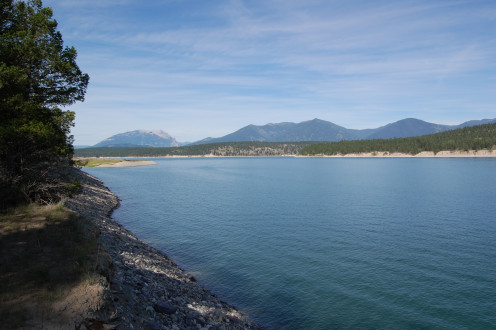
Kootenai National Forest and Lake Koocanusa
2. The Gates of the Mountains
Close to the capital of Montana, Helena, The Gates of the Mountains are on the Missouri River and were named by Lewis and Clark, noted in Lewis’ journal.
There are three tour boats available; The Pirogue, The Sacajawea and The High Rose. While on a tour you will see the majestic limestone walls.
The Gates of the Mountains is also home to a lot of wildlife including; bald eagles, mountain goats, falcons, osprey and other wildlife.
The tour boat will take you to the Meriweather Picnic Area where you will have the choice to stay and explore until the next tour boat arrives. The Meriweather Picnic Area is said to have been a spot where Lewis and Clark stopped to camp.
While exploring this area you will have the opportunity to walk on a number of trails or stay and catch some fish in the river.
The next stop on the tour will take you by some Indian pictographs. Don’t forget to bring your camera to this breathtaking area.
Limestone Cliffs at Gates of the Mountains
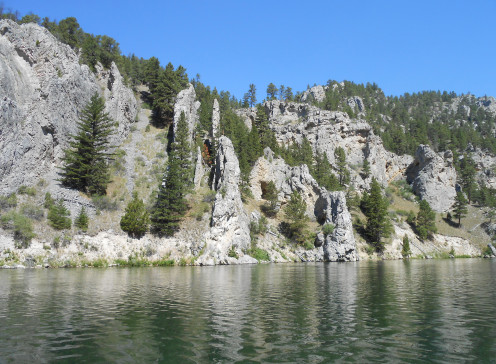
The Opening to the Gates of the Mountains
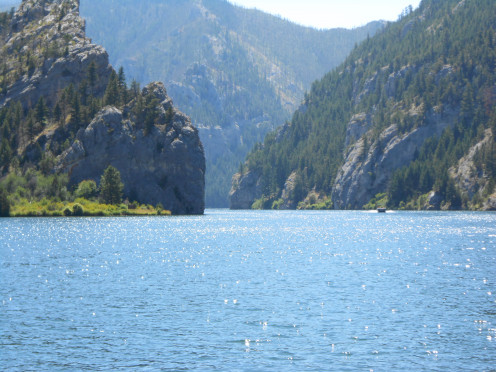
1. Glacier National Park
Established as a park in 1910, Glacier National Park offers views so breathtaking that you will not want to leave your camera at home. The photo opportunities are unlimited.
Many animals inhabit the park including; mountain goat, moose, wolverine and lynx. There are around 300 grizzly bear in the park and over 260 different species of bird.
The mountains in this park were carved from giant glaciers which is where the park got its name from.There are over 200 waterfalls located in the park and a number of different lakes.
Completed in 1932, Going-to-the-Sun-Road is the only road that will take you through Glacier National Park where you can drive your own car or take a propane powered tour bus.
While on this road you will pass St. Mary Lake which is the 2nd largest lake in the park next to Lake McDonald. A beautiful part of the park is the Weeping Wall, which are natural falls from melting snow. The melted snow flows over Garden Wall which is an incline covered in wildflowers.
The Trail of the Cedars is a paved trail with some sections being a raised boardwalk. This trail is full of cedar trees and will lead you to a waterfall which creates a stream.
Also while taking a ride on Going-to-the-Sun-Road you will see spectacular views of the Lewis and Livingston ranges. Glacier National Park is also where you will see Chief Mountain which is 9,080 feet tall.
Chief Mountain is located on the eastern border of Glacier National Park and was called, Tower Mountain, by Lewis and Clark who viewed it from a distance.
One of the 200 waterfalls in the park is Bird Woman falls. Bird Woman Falls is a 560 foot tall waterfall that falls from Mount Oberlin.
Two well-known trails that cross through Glacier National Park are the Continental Divide Trail which runs from Canada to Mexico. The other trail is the Pacific North West Trail which crosses Montana to Washington State.
Going-to-the-Sun-Road
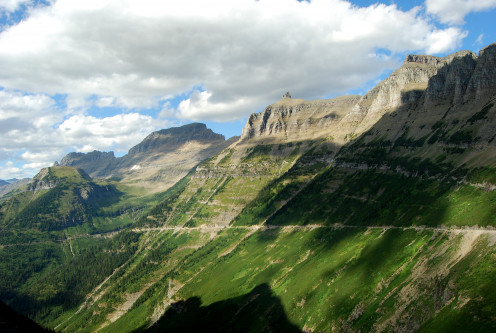
Garden Wall
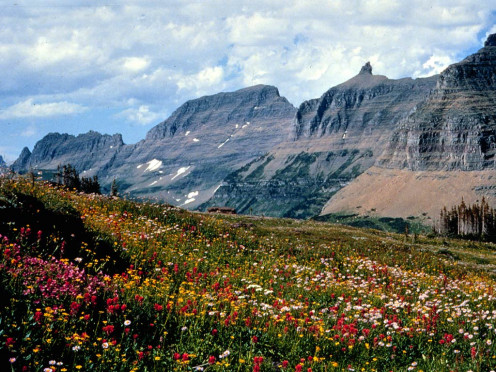
St. Mary Lake
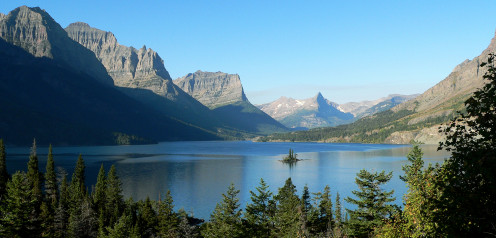
Bird Woman Falls with Mount Oberlin
